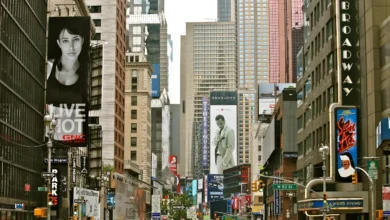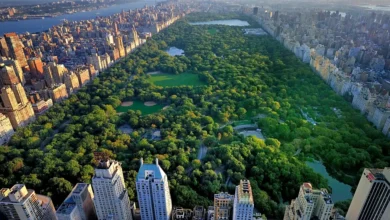The Bronx Zoo, nestled in the heart of New York City, stands as one of the largest and most renowned metropolitan zoos in the world. Spanning 265 acres, it is home to over 6,000 animals representing more than 700 species. Since its opening in 1899, the Bronx Zoo has been a beacon of wildlife conservation, education, and entertainment. This blog delves into the rich history, diverse exhibits, conservation efforts, educational programs, and visitor experiences that make the Bronx Zoo a remarkable destination for animal lovers and conservation enthusiasts alike.
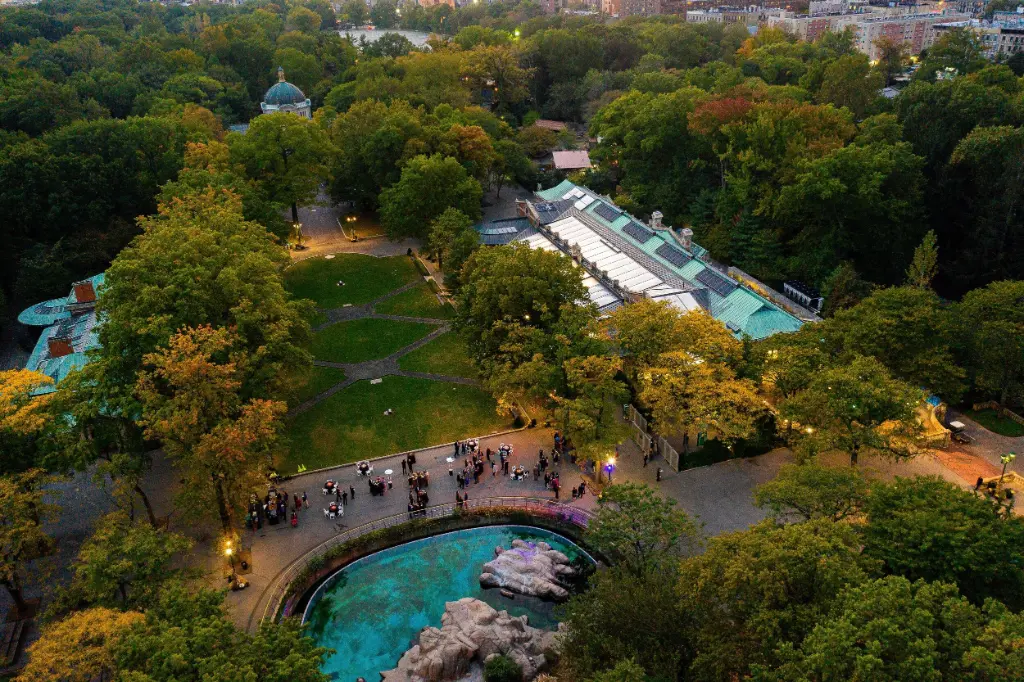
TODAY AT THE ZOO
| Time | Event |
|---|---|
| 10:00 AM | Zoo Opens |
| 3:00 PM | Bee-Eater Feeding |
| 3:00 PM | Sea Lion Feeding |
| 3:30 PM | Penguin Feeding |
| 4:30 PM | Animal Exhibits Close |
| 5:00 PM | Zoo Closes |
2300 Southern Blvd, Bronx, NY 10460, EE. UU.
Bronx, NY 10460
(718) 220-5100
A Brief History of the Bronx Zoo
The Bronx Zoo, officially known as the Bronx Zoological Park, was established by the New York Zoological Society, now known as the Wildlife Conservation Society (WCS). The vision for the zoo was spearheaded by zoologists and conservationists who aimed to create a sanctuary for animals and a center for wildlife research and education. The zoo opened its doors to the public on November 8, 1899, with 843 animals in 22 exhibits.
Early on, the Bronx Zoo set itself apart by focusing on naturalistic exhibits, allowing animals to live in environments that closely resembled their natural habitats. This innovative approach was a departure from the traditional barred cages seen in many zoos of the time.
Over the years, the Bronx Zoo has expanded and evolved, embracing cutting-edge technology and conservation science. It has played a crucial role in breeding programs for endangered species, habitat restoration projects, and global wildlife conservation initiatives.
BRONX ZOOZOO MAP
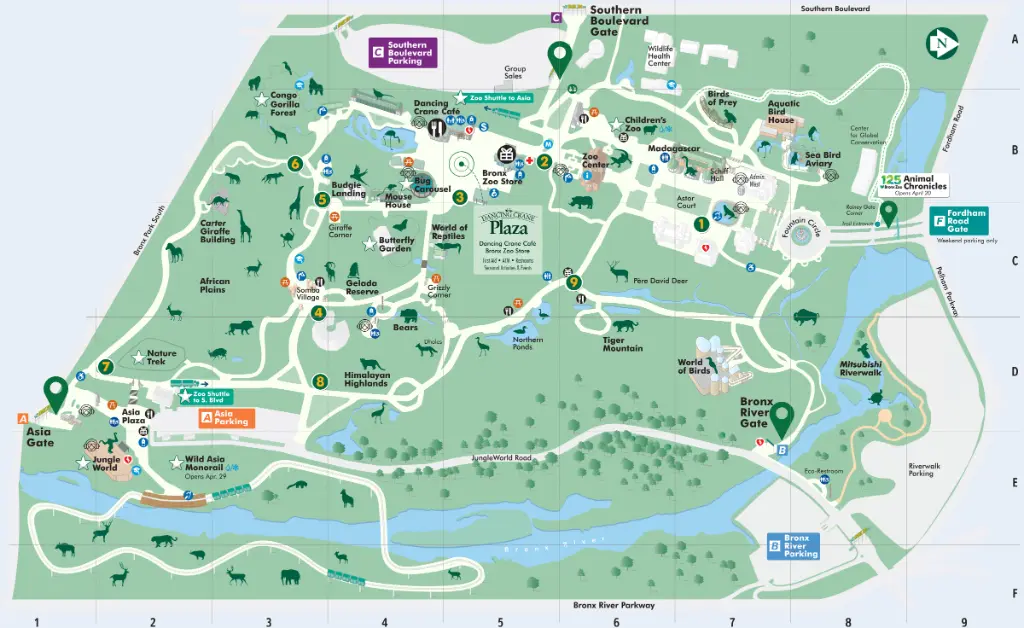
Iconic Exhibits and Attractions
African Plains

The African Plains exhibit, one of the zoo's most popular attractions, offers visitors a glimpse into the diverse ecosystems of Africa. Opened in 1941, it was one of the first exhibits to feature large, open spaces where animals could roam freely, mimicking their natural habitats. Visitors can see zebras, giraffes, lions, and gazelles coexisting in a savanna-like environment. The exhibit also includes a separate area for African wild dogs, an endangered species that the zoo actively works to protect through breeding and conservation programs.
Tiger Mountain
Tiger Mountain, opened in 2003, is a state-of-the-art exhibit designed to educate visitors about the plight of tigers in the wild and the importance of conservation efforts. The exhibit features Amur tigers, one of the largest tiger subspecies, in a naturalistic setting complete with streams, pools, and lush vegetation. Interactive elements and educational displays provide insights into tiger behavior, biology, and the threats they face from habitat loss and poaching.
World of Birds
The World of Birds is an indoor aviary that showcases bird species from around the globe. Opened in 1972, this multi-level exhibit allows visitors to observe birds in various habitats, including rainforests, deserts, and wetlands. The aviary is designed to replicate the natural environments of the birds, providing ample opportunities for flight and natural behaviors. Educational signage and interactive displays offer information about bird migration, breeding, and conservation.
JungleWorld
JungleWorld, an indoor tropical rainforest exhibit, opened in 1985. It features a diverse array of species from Asia, including gibbons, tapirs, and Malayan tigers. The exhibit is meticulously designed to mimic the dense, humid environment of a tropical rainforest, complete with waterfalls, streams, and lush vegetation. JungleWorld provides visitors with an immersive experience, highlighting the biodiversity of rainforest ecosystems and the conservation challenges they face.
Madagascar!
The Madagascar! exhibit, which opened in 2008, focuses on the unique wildlife of the island of Madagascar, home to many species found nowhere else on Earth. Visitors can see lemurs, fossas, and Nile crocodiles, among other species. The exhibit also emphasizes the conservation efforts needed to protect Madagascar's endangered habitats and species. Interactive displays educate visitors about the island's ecological significance and the threats posed by deforestation and human activity.
Congo Gorilla Forest
The Congo Gorilla Forest, opened in 1999, is one of the Bronx Zoo's most ambitious and immersive exhibits. It features Western lowland gorillas in a naturalistic rainforest setting. The exhibit also includes other African species such as red river hogs, okapis, and various bird species. The Congo Gorilla Forest is notable for its focus on conservation, with proceeds from admission fees supporting wildlife conservation projects in Central Africa. The exhibit educates visitors about the challenges facing gorillas and other wildlife in the region, including habitat destruction and poaching.
Conservation Efforts and Achievements
The Bronx Zoo, through the Wildlife Conservation Society, has been at the forefront of global wildlife conservation efforts. The zoo's conservation programs focus on protecting endangered species, preserving critical habitats, and addressing the root causes of wildlife decline. Some of the key conservation initiatives include:
- Species Survival Plans (SSPs): The Bronx Zoo participates in SSPs, coordinated breeding programs designed to maintain genetically diverse populations of endangered species in captivity. The zoo has been instrumental in the successful breeding of species such as the Amur tiger, snow leopard, and Western lowland gorilla.
- Field Conservation Projects: The WCS operates field conservation projects in over 60 countries, working to protect wildlife and habitats through scientific research, community engagement, and policy advocacy. The Bronx Zoo supports these efforts by raising awareness and funds.
- Habitat Restoration: The zoo is involved in habitat restoration projects aimed at restoring and protecting ecosystems that are critical for wildlife. This includes reforestation efforts, wetland restoration, and the creation of protected areas.
- Wildlife Health and Disease Research: The zoo's veterinarians and researchers work to understand and mitigate the impacts of diseases on wildlife populations. This includes monitoring disease outbreaks, developing treatment protocols, and conducting research on wildlife health.
- Conservation Education: The Bronx Zoo plays a vital role in educating the public about conservation issues. Through exhibits, educational programs, and outreach initiatives, the zoo aims to inspire visitors to take action to protect wildlife and the environment.
Educational Programs and Initiatives of the Bronx Zoo
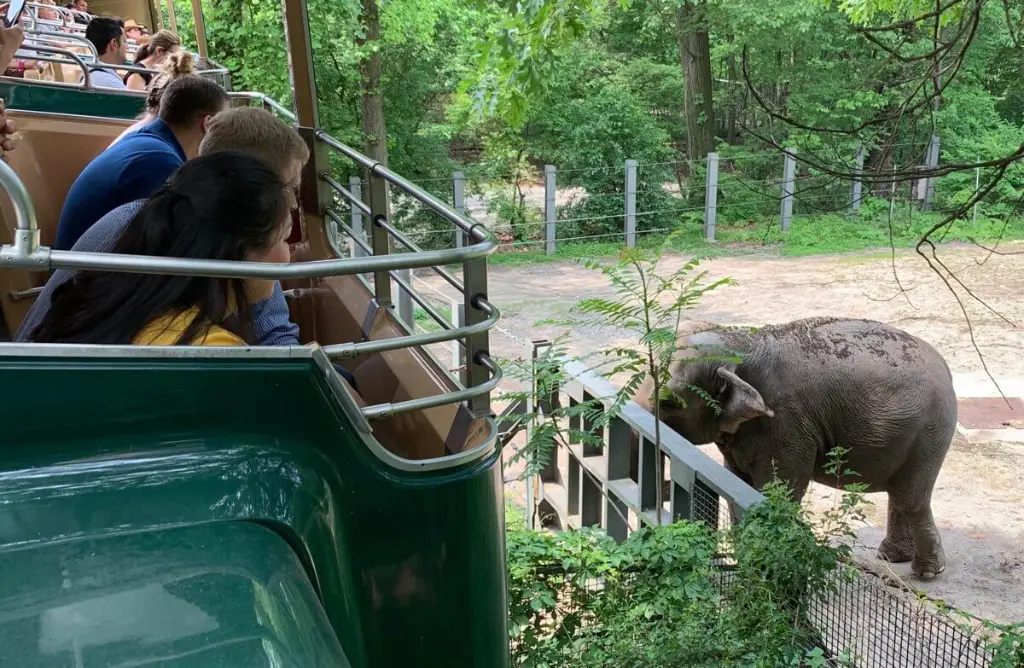
Education is a core component of the Bronx Zoo's mission. The zoo offers a wide range of educational programs and initiatives designed to engage and inspire learners of all ages. Some of the key programs include:
- School Programs: The Bronx Zoo provides educational programs for school groups, including guided tours, workshops, and interactive learning experiences. These programs are designed to align with curriculum standards and enhance classroom learning.
- Camp Programs: The zoo offers summer camps and vacation camps for children, providing hands-on learning experiences that focus on wildlife and conservation. Campers have the opportunity to explore the zoo, participate in animal care activities, and learn from experienced educators.
- Wildlife Theater: The Wildlife Theater program features live performances that educate and entertain visitors about wildlife and conservation. These interactive shows are designed to engage audiences of all ages and promote conservation awareness.
- Adult Education: The zoo offers educational programs for adults, including lectures, workshops, and behind-the-scenes tours. These programs provide opportunities for lifelong learning and engagement with conservation topics.
- Community Outreach: The Bronx Zoo's community outreach programs aim to bring conservation education to underserved communities. This includes partnerships with local schools, community centers, and organizations to provide educational resources and experiences.
- Citizen Science: The zoo encourages visitors to participate in citizen science projects, which involve collecting data and contributing to scientific research. These projects provide valuable insights into wildlife populations and behaviors, while also engaging the public in conservation efforts.
Visitor Experience and Practical Information
A visit to the Bronx Zoo offers a unique and memorable experience for visitors of all ages. Here is some practical information to help plan your visit:
Hours of Operation
The Bronx Zoo is open year-round, with varying hours depending on the season. Typically, the zoo is open from 10:00 AM to 5:00 PM on weekdays and from 10:00 AM to 5:30 PM on weekends and holidays. It is advisable to check the zoo's official website for the most up-to-date hours and any special closures or events.
Admission and Tickets
The zoo offers several ticket options, including general admission, premium admission (which includes access to special exhibits and attractions), and membership packages. Memberships provide unlimited access to the zoo and other WCS parks, as well as additional benefits such as discounts and exclusive events.
Getting There
The Bronx Zoo is located at 2300 Southern Boulevard in the Bronx, New York. It is accessible by public transportation, including subway, bus, and train. Parking is also available on-site for visitors who prefer to drive.
Accessibility
The Bronx Zoo is committed to providing an accessible experience for all visitors. The zoo offers wheelchair rentals, accessible pathways, and accommodations for visitors with disabilities. Service animals are welcome, and sensory-friendly resources are available for visitors with sensory sensitivities.
Dining and Shopping
The zoo features several dining options, including cafes, food stands, and picnic areas. Visitors can enjoy a variety of cuisines, from casual snacks to full meals. The zoo also has gift shops offering a range of souvenirs, toys, books, and apparel.
Tips for Visiting
- Plan Ahead: Review the zoo map and plan your visit to make the most of your time. Identify the exhibits and attractions you want to see and create a rough itinerary.
- Arrive Early: Arriving early can help you avoid crowds and have more time to explore the zoo at a leisurely pace.
- Wear Comfortable Shoes: The zoo covers a large area, so be prepared for plenty of walking. Comfortable shoes are a must.
- Stay Hydrated: Bring a water bottle and stay hydrated, especially during the warmer months.
- Take Advantage of Educational Programs: Participate in educational programs, keeper talks, and animal feedings to enhance your visit and learn more about the animals.
Special Events and Seasonal Highlights

The Bronx Zoo hosts a variety of special events and seasonal highlights throughout the year, offering unique experiences for visitors. Some of the notable events include:
- Boo at the Zoo: This family-friendly Halloween event features costume parades, trick-or-treating, themed exhibits, and interactive activities. It's a fun way to celebrate the spooky season while learning about wildlife.
- Holiday Lights: During the winter holiday season, the zoo is transformed into a magical wonderland with dazzling light displays, holiday-themed exhibits, and festive activities. Visitors can enjoy holiday music, seasonal treats, and special performances.
- Run for the Wild: This annual fundraising event includes a 5K run/walk through the zoo, with proceeds supporting wildlife conservation efforts. Participants can enjoy a unique route through the zoo, followed by post-race activities and entertainment.
- Dinosaur Safari: This seasonal exhibit features life-sized animatronic dinosaurs, offering an immersive experience that takes visitors back to the age of the dinosaurs. The exhibit includes educational displays and interactive elements.
- Bird Migration Celebration: This event celebrates the incredible journey of migratory birds with special exhibits, bird-watching opportunities, and educational programs. Visitors can learn about the challenges migratory birds face and the conservation efforts to protect them.
The Future of the Bronx Zoo
As the Bronx Zoo looks to the future, it remains committed to its mission of wildlife conservation, education, and research. The zoo continues to innovate and expand, with plans for new exhibits, enhanced visitor experiences, and increased conservation efforts. Some of the key initiatives for the future include:
- Sustainability: The Bronx Zoo is dedicated to sustainability and reducing its environmental impact. This includes initiatives to reduce waste, conserve energy, and promote green practices throughout the zoo.
- Technological Advancements: The zoo is exploring the use of new technologies to enhance animal care, exhibit design, and visitor engagement. This includes the use of virtual reality, interactive displays, and advanced monitoring systems.
- Global Conservation Partnerships: The zoo will continue to strengthen its partnerships with conservation organizations, governments, and local communities around the world. These collaborations are essential for protecting wildlife and habitats on a global scale.
- Community Engagement: The Bronx Zoo is committed to engaging and supporting the local community. This includes expanding outreach programs, providing educational resources, and offering opportunities for community involvement in conservation efforts.
- Animal Welfare: Ensuring the highest standards of animal welfare remains a top priority. The zoo will continue to invest in research, veterinary care, and enrichment programs to ensure the well-being of all its animals.
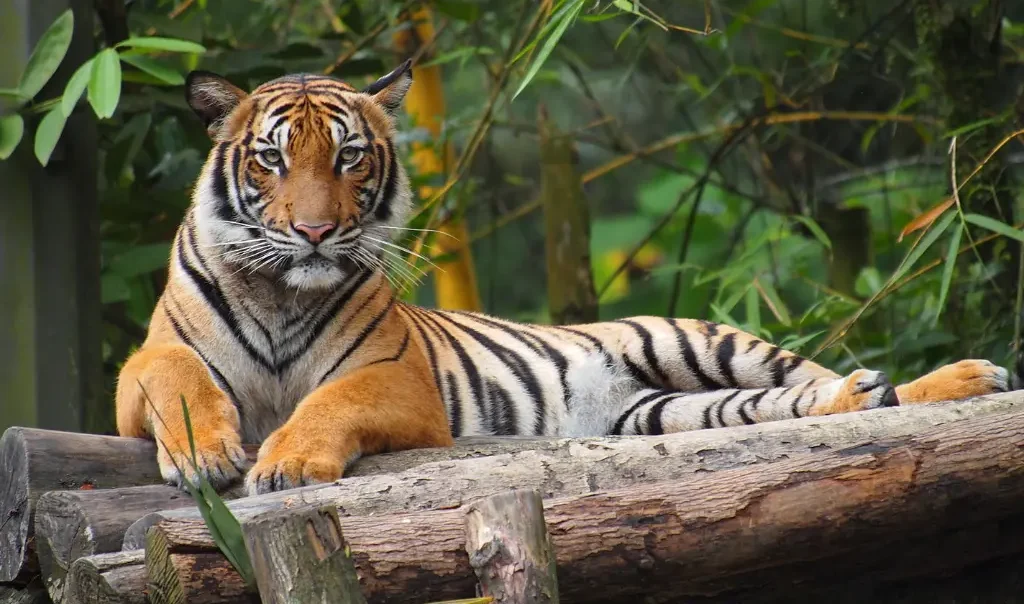
The Bronx Zoo is more than just a place to see animals; it is a hub of conservation, education, and inspiration. With its rich history, diverse exhibits, and unwavering commitment to wildlife protection, the Bronx Zoo offers a unique and meaningful experience for visitors of all ages. As it continues to evolve and innovate, the Bronx Zoo will undoubtedly remain a leader in the world of zoological parks, inspiring future generations to care for and protect the natural world. Whether you are a first-time visitor or a lifelong supporter, the Bronx Zoo invites you to join in its mission to celebrate and conserve the wonders of wildlife.
BRONX ZOO ANIMALS

AARDVARK

AFRICAN PAINTED DOG

ALDABRA TORTOISE

AMERICAN ALLIGATOR

AMERICAN BISON

AMUR TIGER

ANACONDA

ANDEAN CONDOR

ASIAN ELEPHANT

BABY DOLL SHEEP


BLUE IGUANA

BOER GOAT

CALIFORNIA SEA LION
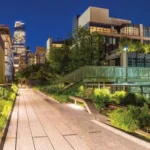 Exploring the New York High Line: An Urban Oasis
Exploring the New York High Line: An Urban Oasis

CARIBBEAN FLAMINGO

CHINCHILLA

COLLARED LEMUR

COQUEREL'S SIFAKA

CUBAN AMAZON PARROT

DHOLE

EBONY LANGUR

FENNEC FOX

FOSSA

GELADA

GIANT ANTEATER

GIRAFFE

GORILLA

GRIZZLY BEAR

HENKEL'S LEAF-TAILED GECKO

INDIAN GHARIAL

INDIAN RHINOCEROS

KING COBRA

LITTLE PENGUIN

MADAGASCAR TREE BOA

MAGELLANIC PENGUIN
 The Wonder Wheel Amusement Park: A Timeless Icon of Fun and Adventure
The Wonder Wheel Amusement Park: A Timeless Icon of Fun and Adventure

MALAYAN TAPIR

SMALL CLAWED ASIAN OTTER

SNOW LEOPARD

SNOWY OWL

SOUTHERN WHITE-FACED OWL

SOUTHERN WHITE RHINOCEROS

SQUIRREL MONKEYChildren's Zoo

TUFTED PUFFIN

WHITE CHEEKED GIBBON

WHITE-THROATED BEE EATER
 The Yankee Stadium: A Legacy of Baseball Excellence and American Culture
The Yankee Stadium: A Legacy of Baseball Excellence and American Culture

ZEBRA




















